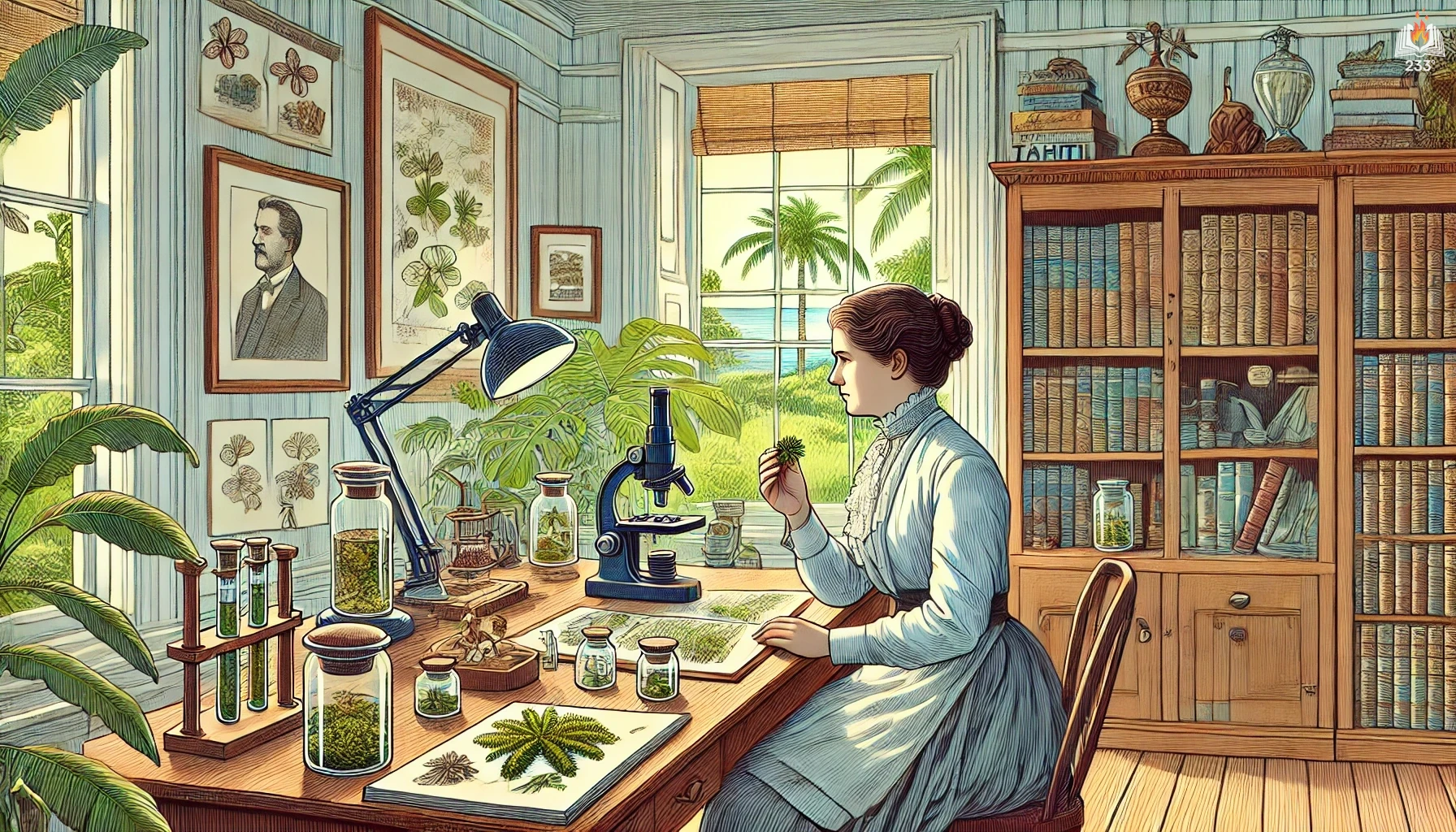Stern Men by Elizabeth Gilbert, published in 2000, is a richly comic and sharply observant novel set on two isolated lobster-fishing islands off the coast of Maine. The story follows Ruth Thomas, a determined young woman navigating life amid quirky, cantankerous locals and entrenched rivalries. It is a tale of self-discovery, family feuds, and the clash of tradition and progress, tinged with Gilbert’s signature humor and insight.
Plot Summary
Ruth Thomas was born on Fort Niles Island, a rocky and isolated speck off the coast of Maine, where the sea was both a provider and a punisher. Raised amidst the ever-present tension between Fort Niles and its neighboring island, Courne Haven, Ruth grew up absorbing the fierce, unspoken codes of loyalty and survival that dictated the lives of her insular community. These twin islands, practically identical in their geography but endlessly divided by bitter rivalries, were populated by families of lobstermen who viewed each other with equal measures of suspicion and disdain. For generations, the two islands had feuded over territory, lobster traps, and pride, with no one daring to question the sense of it all.
Ruth’s childhood was marked by upheaval. Her mother, Mary, left Fort Niles when Ruth was a young girl, moving to the mainland and leaving Ruth to live under the care of her father, Stanley, and their boisterous neighbors, the Pommeroys. While her father remained a stoic and distant figure, preoccupied with his lobstering, Ruth found a kind of rough comfort in the Pommeroy household, where chaos reigned, and love was freely given, if not always expressed in conventional ways.
Even as a child, Ruth stood apart from her peers. Observant and sharp-witted, she watched the adults around her with a quiet intensity, cataloging their quirks and contradictions. The island women, with their no-nonsense attitudes, often dismissed Ruth’s reticence as stubbornness, while the men treated her like an oddity, a girl too smart for her own good. But Ruth’s sense of independence only grew stronger as she came of age, fueled by her desire to break free from the narrow expectations of island life.
When Ruth turned eighteen, her wealthy benefactor, Miss Vera Ellis, intervened, arranging for her to attend boarding school on the mainland. It was an opportunity to escape the suffocating confines of Fort Niles, but Ruth returned after just two years, unwilling to leave her home entirely behind. Her return was met with a mix of curiosity and skepticism. Ruth had grown into a tall, striking young woman, her defiance sharper than ever. The islanders, set in their ways, viewed her decision to return as both a rejection of mainland life and a refusal to conform to their own customs.
Back on Fort Niles, Ruth began to navigate the complex web of relationships and rivalries that defined her community. She worked alongside the men, proving her strength and resilience in an industry where women were seldom welcomed. Her presence on the docks and among the lobster traps was a quiet rebellion, a declaration that she would forge her own path in a world dominated by tradition and testosterone.
At the heart of the islands’ long-standing feud was a competition over lobster fishing territories, and Ruth found herself entangled in this conflict. Her father, though respected for his skill as a lobsterman, was deeply mistrustful of the Courne Haven fishermen, who he believed would stop at nothing to steal from Fort Niles’ waters. Angus Addams, a fierce and aggressive lobsterman, epitomized this hostility, his grudges festering into actions that often escalated tensions between the islands.
But Ruth, ever pragmatic, saw through the bluster and bitterness. She formed a tentative bond with Owney Wishnell, a young man from Courne Haven whose family was notorious for their superior lobstering skills. Owney, with his easy charm and quiet confidence, intrigued Ruth. Their connection grew despite the animosities that surrounded them, and Ruth began to see the futility of the islands’ endless feuding through his eyes.
As Ruth and Owney’s relationship deepened, Ruth became increasingly aware of the constraints imposed by her community. The older generation clung to their grudges and traditions, unwilling to adapt or compromise. The younger generation, including Ruth, faced the challenge of either perpetuating this cycle or finding a way to break free. Ruth’s sharp intelligence and unyielding spirit positioned her as a catalyst for change, though she understood that such a transformation would not come easily.
Ruth’s journey toward self-discovery and independence culminated in a series of confrontations with her father and the island’s elders. She challenged their rigid views, advocating for cooperation and a more equitable way of life. In doing so, Ruth not only asserted her place within the community but also paved the way for a future that valued mutual respect over divisive rivalries.
As the seasons changed and the tides continued their ceaseless rhythm, Ruth came to embody the resilience and adaptability of her rugged homeland. She remained rooted in Fort Niles, a force of strength and change in a place that had long resisted both. Her defiance was not an act of rebellion but a declaration of belonging on her own terms, a testament to the enduring spirit of a woman shaped by the sea and the rocky soil of her home.
Ruth’s story was not one of dramatic transformation or sweeping victories. Instead, it was a quiet assertion of identity and agency, a refusal to be defined by the limitations of her upbringing. In the end, Ruth stood as a bridge between the past and the future, a living reminder that even in the most isolated corners of the world, change was not only possible but inevitable.
Main Characters
- Ruth Thomas: The intelligent, strong-willed protagonist raised on Fort Niles Island. Ruth rejects societal norms and questions her place in the insular world of lobstermen while seeking her own path amid familial and community tensions.
- Stanley Thomas: Ruth’s stoic father, a lobsterman deeply connected to the island’s traditions but often emotionally distant from Ruth.
- Mary Thomas: Ruth’s mother, who leaves the island when Ruth is a child. Her absence looms large over Ruth’s upbringing and worldview.
- Mrs. Pommeroy: A vivacious neighbor who provides Ruth with a sense of family and love after her mother’s departure. Her chaotic household is both grounding and overwhelming.
- Simon Addams: A quirky bachelor nicknamed “Senator,” known for his eccentric habits and intelligence. He plays a grandfatherly role in Ruth’s life.
- Angus Addams: Simon’s tough, aggressive twin brother, embodying the harsh, competitive spirit of island lobstermen.
Theme
- Isolation and Community: The islands’ physical and social isolation shapes the lives of their inhabitants, creating a close-knit but contentious community.
- Tradition vs. Change: The novel explores the tension between the islanders’ adherence to old ways and the inevitable encroachment of modernization and outside influences.
- Self-Discovery: Ruth’s journey is one of understanding her identity and carving a place for herself within—or apart from—the island’s rigid expectations.
- Gender Roles: Ruth’s resistance to traditional female roles highlights the gender dynamics in a patriarchal, insular society.
- Nature and Survival: The raw, untamed beauty of the Maine coast parallels the characters’ rugged lives and the fierce competition in the lobster trade.
Writing Style and Tone
Elizabeth Gilbert’s writing in Stern Men is vivid and richly detailed, blending humor with poignant observation. Her sharp characterizations breathe life into the island’s eccentric inhabitants, making even minor figures memorable. The tone shifts deftly between comedic and reflective, with Gilbert’s sardonic wit often exposing the absurdities of small-town life.
The narrative is immersive, with lush descriptions of the Maine coastline and a deep dive into the lobster trade’s intricacies. Gilbert’s use of metaphor and lyrical prose creates a textured reading experience, while her exploration of themes like family, rivalry, and resilience gives the novel emotional depth.
We hope this summary has sparked your interest and would appreciate you following Celsius 233 on social media:
There’s a treasure trove of other fascinating book summaries waiting for you. Check out our collection of stories that inspire, thrill, and provoke thought, just like this one by checking out the Book Shelf or the Library
Remember, while our summaries capture the essence, they can never replace the full experience of reading the book. If this summary intrigued you, consider diving into the complete story – buy the book and immerse yourself in the author’s original work.
If you want to request a book summary, click here.
When Saurabh is not working/watching football/reading books/traveling, you can reach him via Twitter/X, LinkedIn, or Threads
Restart reading!








